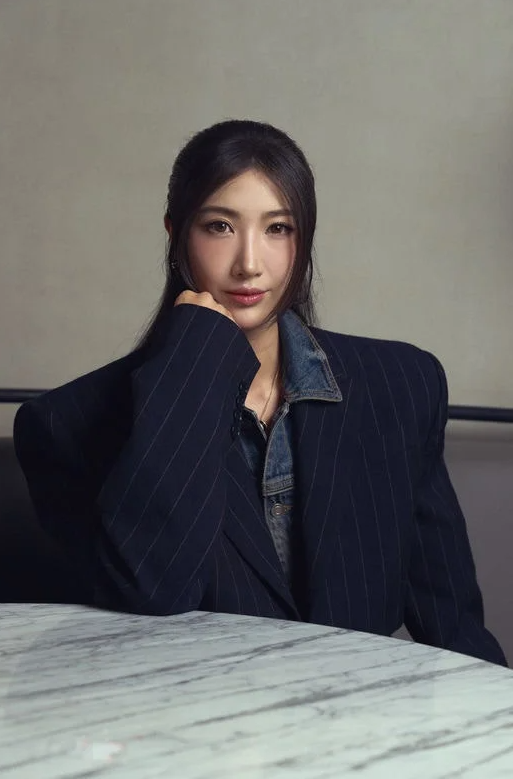EJAE’s Rising Spotlight: From Composer to Voice of a Global Phenomenon
K-pop’s latest global conversation isn’t only about idols and choreography—it’s about the storytellers shaping the sound. EJAE, the singer-songwriter and composer behind “Golden,” the standout OST from Netflix’s animated hit K-pop Demon Hunters, is stepping into the limelight with remarkable poise. At a press briefing held in Seoul, EJAE shared reflections on the whirlwind journey, creative intentions, and future dream collaborations with leading K-pop artists like aespa and BTS. It’s a moment that cements EJAE not just as a behind-the-scenes architect, but as a front-facing voice of cultural resonance.
A Breakout Built on Purpose: The Cultural Core of “Golden”
EJAE described the creative north star behind “Golden” with precision: to present Korean culture authentically within a global frame. That intention didn’t stay theoretical. It shaped concrete choices—especially the inclusion of Korean lyrics in the chorus. The result is striking. At overseas singalong screenings, non-Korean audiences have been echoing the refrain in Korean, a living proof that language is not a barrier when emotion and melody align. This is the kind of cultural bridge K-pop Demon Hunters was designed to build, and “Golden” has become its most vibrant plank.
Why the Korean Chorus Matters
- Phonetic memorability: The cadence of the Korean line anchors the hook.
- Emotional clarity: The phrase carries a sense of longing and radiance that fits the story’s arc.
- Global accessibility: Listeners embrace the original language when it feels integral, not ornamental.
K-pop Demon Hunters: Narrative Power Meets Streaming Scale
The series positions its trio—Rumi, Mira, and Joy—as superstar performers by day and clandestine guardians after dark. That duality is the perfect narrative container for a hybrid soundtrack: cinematic yet pop-forward, fierce yet melodic. K-pop Demon Hunters has surged into a rare echelon of streaming visibility, and “Golden” has become its sonic banner, reinforcing how a well-placed OST can transcend the screen to chart in the public imagination.
The Sound of Dual Lives
- Pop structure with cinematic lift: Verse-chorus hooks supported by dynamic swells.
- Textural contrast: Shimmering synths and bold drum programming mirror onstage dazzle vs. offstage grit.
- Lyrical alignment: Themes of shining through constraints match the protagonists’ hidden battles.
EJAE’s Next Chapter: Dream Collaborations with aespa and BTS
Asked about future partnerships, EJAE named aespa and BTS without hesitation—two acts at the front lines of K-pop’s creative evolution. With aespa, known for layered concepts and high-gloss electropop, EJAE’s melodic clarity and chorus craftsmanship could amplify the group’s futuristic edge. With BTS, whose catalog spans intimate ballads to arena anthems, EJAE’s ability to thread emotional sincerity through big hooks feels like an organic fit—imagine a Jung Kook-led topline floating over a gleaming “Golden”-style chorus, but engineered for a stadium singalong.
Strategic Fit: Why These Collabs Make Sense
- aespa: Concept-driven soundscapes benefit from a chorus-first songwriter who can crystallize complex ideas into repeatable hooks.
- BTS: Emotional universality and vocal-forward melodies align with EJAE’s strengths in narrative lyricism and impactful refrains.
The Anatomy of “Golden”: A Quick Craft Breakdown
“Golden” operates on a simple idea executed with precision. Its chorus ascends quickly, placing the most memorable motif early. The payoff comes from repetition that doesn’t tire—the melodic contour varies just enough to keep the line alive. Meanwhile, the production leans modern but restrained, allowing the vocal to carry intent. The choice to spotlight Korean words at the summit of the melody was both an artistic and strategic decision: the hook becomes a cultural signature, not a generic refrain.
Production Touchpoints
- Vocal-led mix with crisp top-end sheen for clarity.
- Synth pads that create a cinematic halo around the lead.
- Percussive builds that cue emotional lift without over-arranging.
Cultural Resonance at Scale
The phenomenon around K-pop Demon Hunters and “Golden” underscores a broader trend: audiences crave authentic cultural textures, especially when paired with high-quality pop form. When a song invites listeners into its original language and still lands emotionally, it transcends geography. For creators and marketers alike, the lesson is clear—embed cultural DNA as a feature, not a garnish. EJAE’s approach exemplifies this shift, turning “Korean” into the hook, not just the context.
What Comes Next for EJAE
Momentum like this often expands a creator’s universe—more writer’s rooms, more cross-border sessions, deeper OST briefs, and, potentially, an artist project that centralizes EJAE’s voice. If collaborations with aespa or BTS materialize, expect a sharpened blueprint: a chorus that stays in your head, lyrics that carry meaning, and a production that respects vocal storytelling. It’s the formula that has defined “Golden,” and it’s one with staying power.
